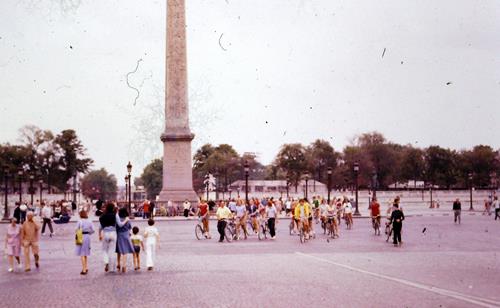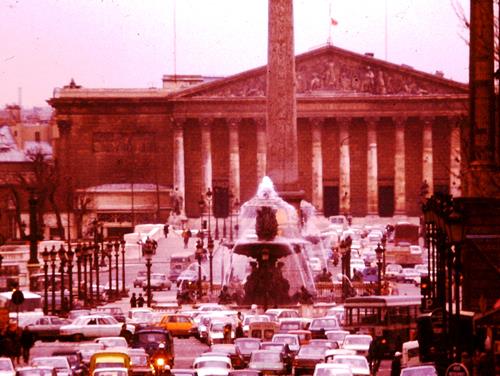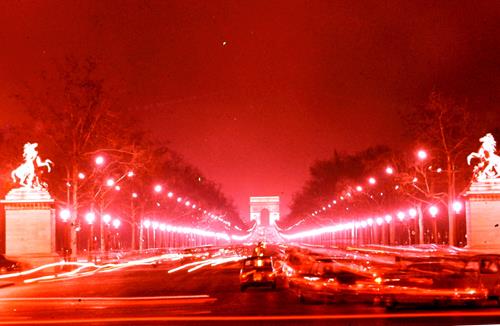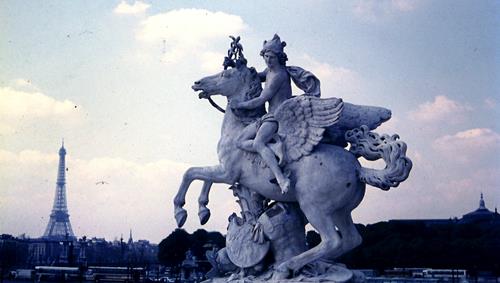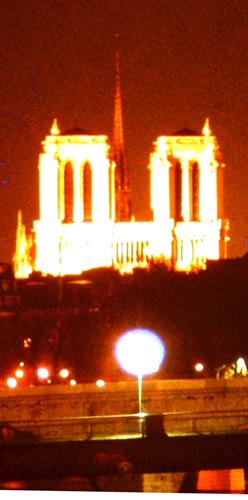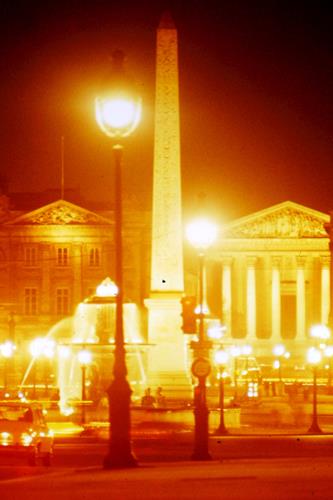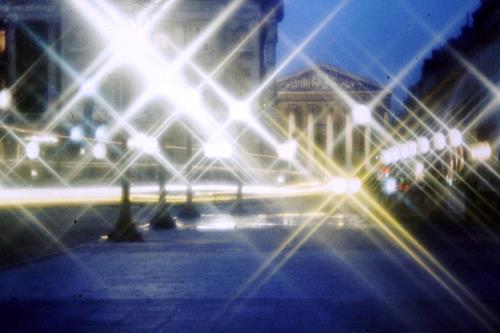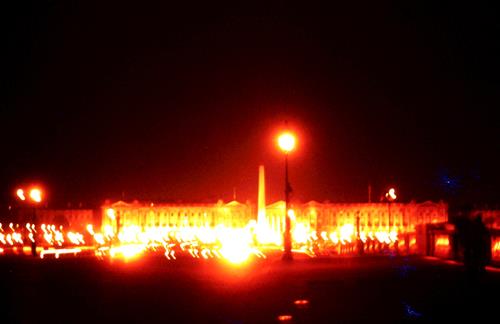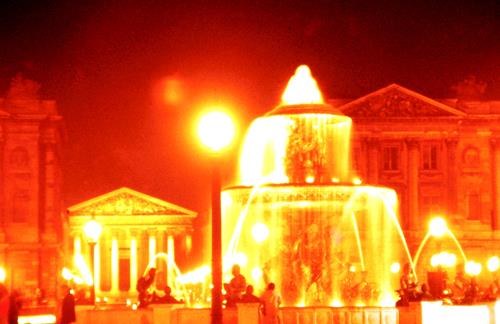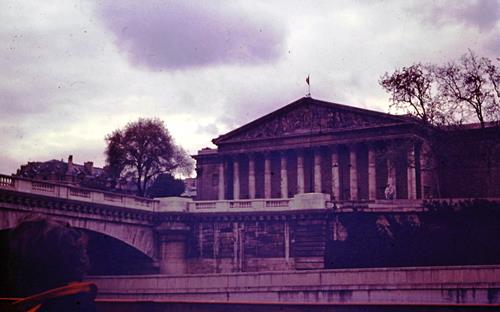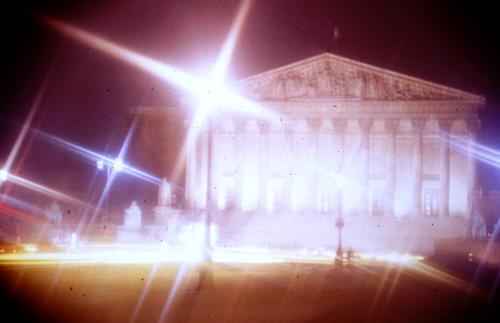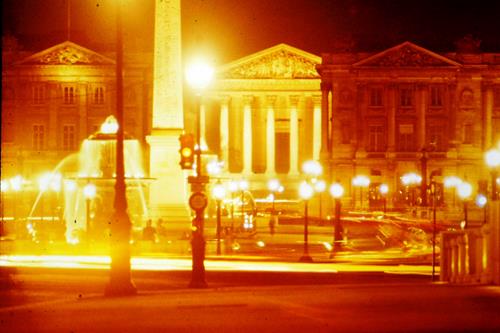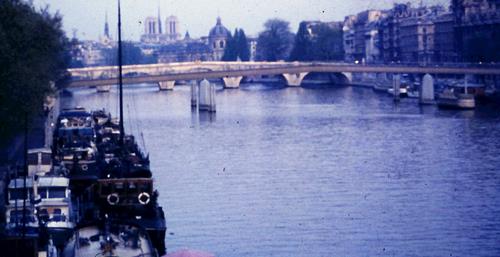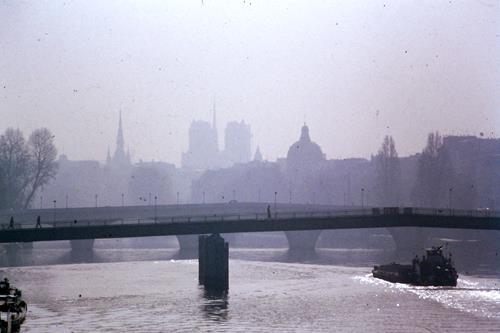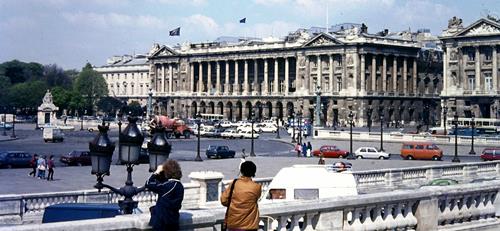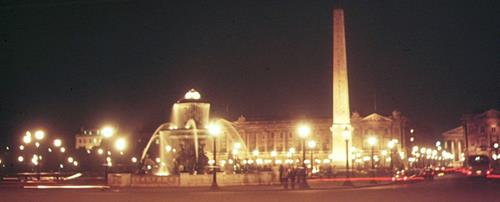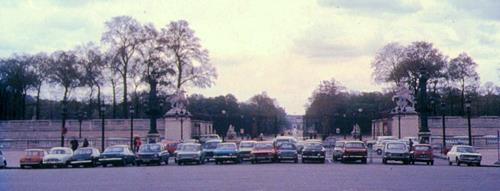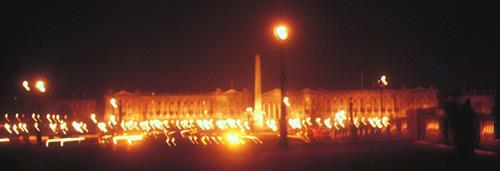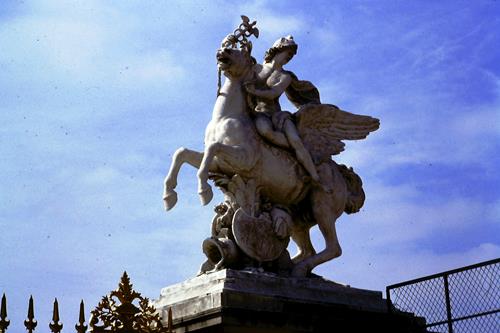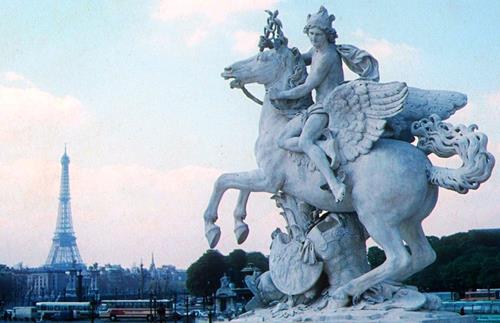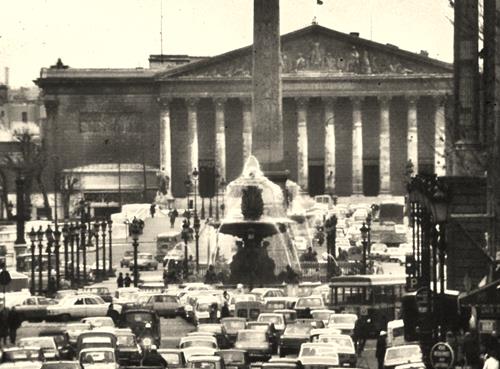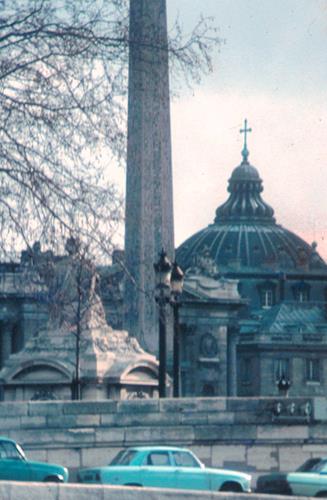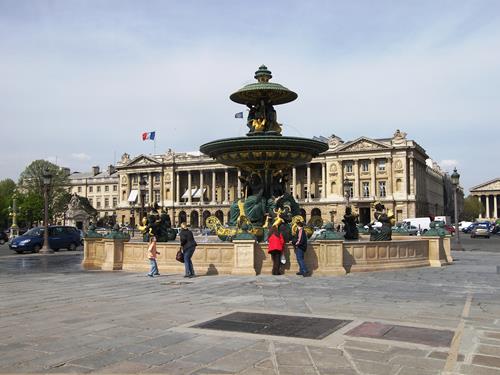
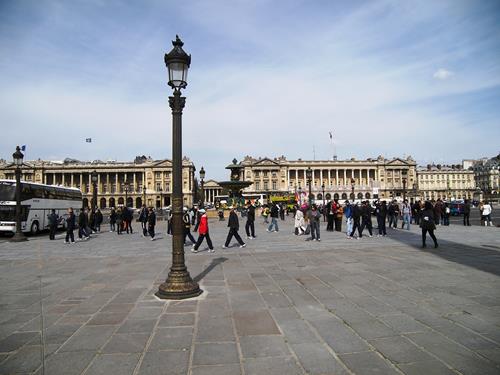
Place de la Concorde
This
great square was originally designed by Gabriel to be a present from the people
of Paris to King Louis XV,
at that time known as Louis the Well-Beloved. He
created a 21-acre octagon surrounded by a dry moat, with a statue of the King in
the centre.
At
intervals around the moat were statues representing the chief towns of France,
and the centre of the square was reached by four bridges.
Amusingly, the squatters of
Paris soon discovered that the pedestals of the statues were hollow, and they
moved in,
hanging out
washing and growing vegetables in the moat.
In 1770, however, the crowd in the square panicked
during a firework display held to celebrate the wedding of the King’s son.
133 people were crushed
to death in the moat, which had to be filled in.
During the Reign of Terror the Square’s name was
changed from Place Louis XV to Place de la Révolution,
and 1,343 people were
guillotined there, starting with Louis XVI. After that, the square was given its
present name
(Concord
means Peace and Harmony), and the bridge across the river was built with stones
taken from the demolished Bastille.
In the reign of Louis-Philippe the square was
completed by an architect named Hittorff, who added the fountains
and brought from the ruined
palace of Marly the statues at the entrances of the Tuileries gardens (‘Winged
Horses’ by Coustou)
and
the Champs-Élysées (‘Horse-tamers’ by Coysevox). The Obelisk in the centre of
the square was a gift to the people of France
from Mohammed Ali, Pasha of Egypt. It is 3,300 years
old and weighs 2,200 tons.
Around the base of the obelisk, which came from the
Temple of Luxor, are carvings representing the machines used to bring it to
Paris and set it up
(Cleopatra’s needle, you may remember, was both broken and lost at sea on its
way to London, so the French engineers had something to crow about).
The two vast buildings to the
North of the square are part of Gabriel’s original plan.
The Western one, now the Hôtel
Crillon, was originally palaces for several noblemen; the other, now the Navy
Ministry, was the royal furniture store.
The Kings, you see, had about fifty palaces and
châteaux; rather than keep them all furnished all the time,
they kept the furniture in a
central store and sent it out as needed.


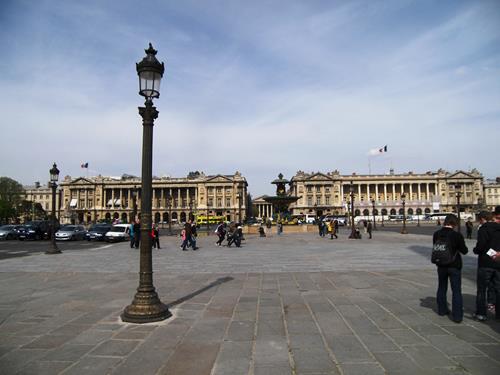

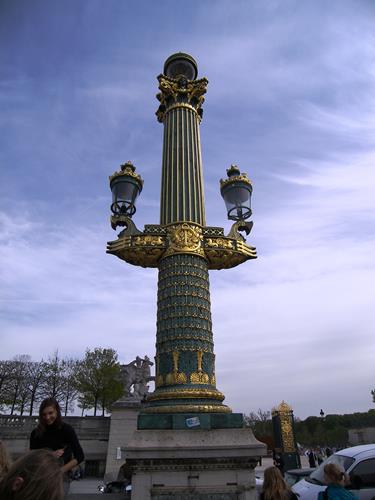
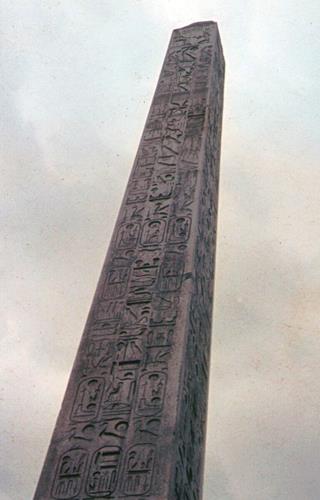
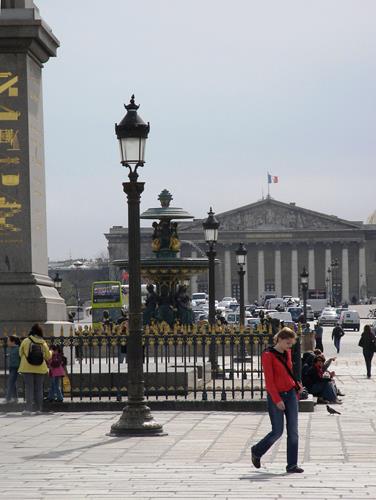
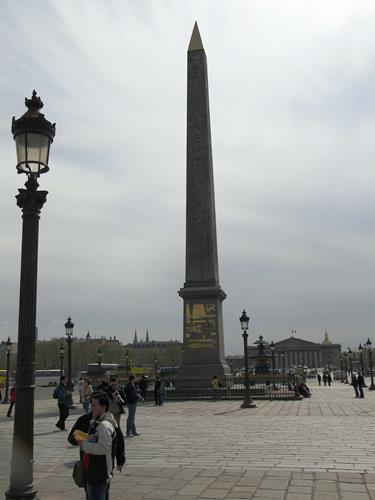
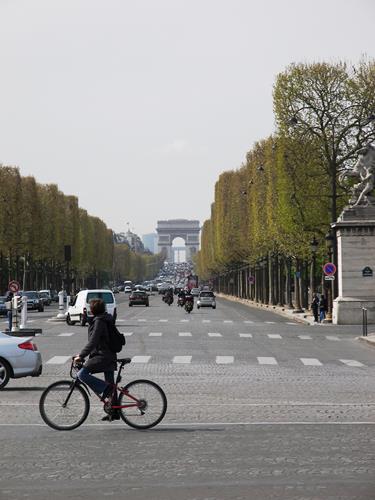
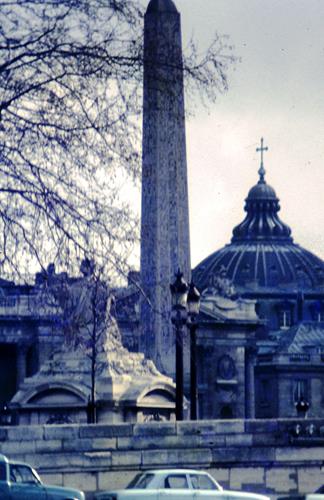

.jpg)

